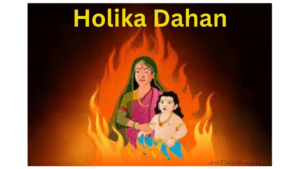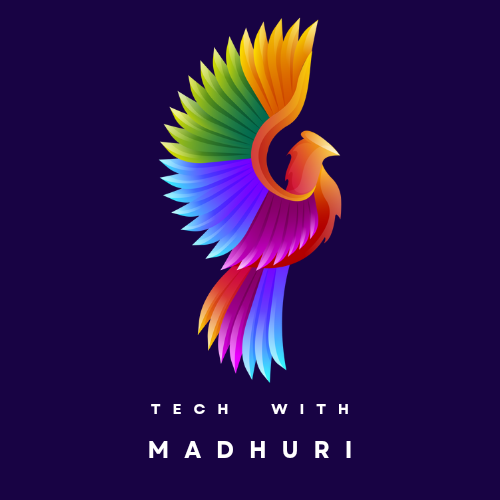What is Holi(2024) ?

Why We Celebrate Holi 2024 ?
Holi is a vibrant Hindu festival celebrating the arrival of spring, the victory of good over evil, and the abundant harvest. It is marked by throwing colored powders and water, festive foods, and joyous dancing.
Significance of Holi
Welcome Spring
Holi marks the arrival of spring and the end of winter gloom, symbolizing growth and new beginnings.
Celebration of Love
It’s a time to forgive, mend broken relationships, and celebrate love and unity among all.
Victory of Good
Holi commemorates the triumph of good over evil, based on several Hindu mythological legends.
Legends and stories associated with Holi
Holika Dahan
Once upon a time, in the ancient kingdom of Multan, there lived a virtuous and devoted young boy named Prahlad. His father, Hiranyakashipu, was a powerful and arrogant king who had gained immense strength through his penance and a boon from Lord Brahma, making him nearly invincible.
Despite his father’s tyranny and disregard for the gods, Prahlad remained deeply devoted to Lord Vishnu. His unwavering faith and goodness were like a beacon of light in the kingdom overshadowed by his father’s ego. Hiranyakashipu, infuriated by his son’s devotion to Vishnu, tried various means to divert Prahlad’s allegiance but failed each time.
Unable to tolerate his son’s refusal to worship him as a deity, Hiranyakashipu sought the help of his wicked sister, Holika. Holika possessed a magical shawl that made her immune to fire. Together, they hatched a sinister plan to end Prahlad’s devotion once and for all.
One day, Holika lured Prahlad into a giant bonfire, intending to use her enchanted shawl to emerge unscathed. As the flames roared, Holika sat with Prahlad on her lap, confident of her invincibility. However, divine intervention changed the course of events.
As the fire blazed, the winds carried away Holika’s protective shawl and covered Prahlad instead. To everyone’s astonishment, Prahlad emerged unharmed, while Holika succumbed to the flames. This miraculous incident became a symbol of the triumph of good over evil and faith over treachery.
News of Holika’s demise spread throughout the kingdom, leaving Hiranyakashipu in disbelief. His anger intensified, and he confronted Prahlad. In a fit of rage, the arrogant king challenged his son, asking where his beloved Lord Vishnu was hiding.
To this, Prahlad calmly replied, “He is everywhere, father, even in the tiniest of particles.” Enraged by Prahlad’s response, Hiranyakashipu struck a pillar in the palace, demanding Vishnu to reveal himself. To everyone’s astonishment, Lord Vishnu emerged in the form of Narasimha – a half-man, half-lion incarnation.
In a fierce battle, Narasimha defeated Hiranyakashipu, ensuring justice prevailed in the kingdom. Prahlad, now free from his father’s tyranny, ruled with wisdom and compassion, fostering a era of peace and prosperity.
The story of Prahlad and Holika serves as a timeless reminder that true devotion, goodness, and faith can overcome even the darkest forces, bringing about the triumph of righteousness in the end.
Story of Prahlad and Holika, signifying the victory of devotion over evil intentions.

Also Read
Radha-Krishna
The playful and colorful love story of Lord Krishna and Radha, celebrated during Holi.
In the idyllic village of Vrindavan, where the air was filled with the sweet scent of blooming flowers and the melodious chirping of birds, lived the enchanting duo – Lord Krishna and his beloved Radha. The two were inseparable, their bond transcending the earthly realm, creating an aura of love and joy that captivated the hearts of all who witnessed it.
One fine spring day, as the vibrant festival of Holi approached, the entire village buzzed with anticipation. The townsfolk gathered vibrant powders, prepared sweet treats, and decorated their homes in hues of joy. Among them, Krishna’s mischievous eyes sparkled with excitement, knowing that Holi was the perfect occasion to play pranks on his beloved Radha.
As the festivities unfolded, the playful mischief began. Krishna, with his blue complexion and a mischievous glint in his eyes, approached Radha with a mischievous smile. He slyly dipped his fingers into bright hues of gulal – red, blue, and yellow – and gently smeared them on Radha’s face. Her laughter echoed through the air as she retaliated, filling their world with bursts of laughter and joy.
The village transformed into a canvas of colors, with Krishna and Radha leading the way. Their playful banter and teasing gestures added a magical touch to the already vibrant celebration. The sun dipped low on the horizon, casting a warm glow on the kaleidoscope of colors that adorned the village.
Krishna, known for his playful nature, orchestrated a water fight with Radha and the other villagers. Laughter rang out as water balloons burst in mid-air, showering everyone with drops of liquid color. Radha’s eyes sparkled with delight as she and Krishna engaged in a spirited water battle, each splash deepening the hues of their joy.
As the day unfolded into night, the revelry continued. Bonfires illuminated the village, and the air was filled with the rhythmic beats of drums. Krishna and Radha, now adorned in hues of Holi, danced under the moonlit sky, their hearts entwined in a celebration of love and camaraderie. The colorful festival of Holi in Vrindavan became a timeless tale of love, laughter, and joy. The playful antics of Lord Krishna and Radha during Holi showcased the beauty of their divine love, reminding everyone that life’s true essence lies in the joyous celebration of love, friendship, and the vibrant colors that bind us all together.
Kama’s Resurrection
Legends recount the resurrection of Kama, the god of love, during the Holi festival.
Rituals and traditions of Holi
Colorful Play
People throw bright colored powders and water as part of the joyous celebrations.
Traditional rituals include smearing gulal (color) on faces and sharing laughter.
Bonfires
The ritual of Holika Dahan involves lighting bonfires, symbolizing the victory of good over evil.
People gather around the bonfire, pray, and seek blessings from the fire.
Sweets and Treats
Special sweets like gujiya, mathri, and thandai are prepared and shared with loved ones.
Holi is incomplete without delicious traditional delicacies.
Why We Celebrate Holi 2024 ?(Holi Songs)
Playing with colors
Community Spirit
Playing and celebrating together fosters community spirit and harmony.
Symbolic Meaning
The colors signify energy, life, and the vibrancy of nature and all living beings.
Bonds and Joy
Colorful celebrations strengthen bonds and bring immense joy and excitement to all.
Special Holi delicacies
Gujiya
A sweet dumpling filled with khoya (reduced milk) and dry fruits, deep-fried to perfection.
Thandai
A refreshing drink made with milk, almonds, pistachios, and flavored with saffron and cardamom.
Mawa Bati
Rich, creamy sweet made with mawa (khoya) and a delectable mix of nuts and saffron.
Holi celebrations around the world
India
Mass gatherings, color plays, and cultural programs.
United Kingdom
Holi festivals in parks with vibrant color throws and music.
United States
Holi events with multicultural performances and color runs.
Nepal
Huge public celebrations and religious rituals at temples.
Conclusion and key takeaways
Participants Globally
The Holi festival attracts a massive global participation of over 16,000 people annually.
Symbolic Days of Celebration
Holi is celebrated over two days and is known for its joyful and vibrant nature.
How to make natural holi colours at home
FAQS (Why We Celebrate Holi 2024 ?)
1. What is the significance of Holi?
– Holi is a Hindu spring festival celebrated to mark the victory of good over evil and the arrival of spring. It is a time for joy, love, and the vibrant celebration of colors.
2. When is Holi celebrated?
– Holi is usually celebrated in March, on the full moon day of the Hindu lunisolar calendar month of Phalgun.
3. How is Holi celebrated?
– Holi is celebrated with enthusiasm and involves people throwing colored powders and water at each other. Traditional rituals, bonfires, music, and festive foods are also part of the celebration.
4. What are the traditional sweets and dishes prepared during Holi?
– Popular Holi dishes include gujiya, mathri, puran poli, thandai (a spiced milk drink), and various sweets made from jaggery and sesame seeds.
5. Why do people light bonfires during Holi?
– The lighting of bonfires symbolizes the burning of Holika, a demoness, and signifies the victory of good over evil. It is known as Holika Dahan.
6. Are there any specific customs or rituals associated with Holi?
– Yes, Holi involves various customs like applying tilak on the forehead, offering prayers, and seeking blessings from elders. Playing with colors and participating in community celebrations are also common customs.
7. Can anyone participate in Holi celebrations?
– Yes, Holi is a festival that transcends religious and cultural boundaries. People from different backgrounds often join in the festivities, sharing joy and colors.
8. Is there any special significance to the colors used during Holi?
– Each color used during Holi holds symbolic significance. For example, red represents love and fertility, blue is associated with the divine, and green symbolizes life and happiness.
9. How can one protect their skin and hair during Holi celebrations?
– Applying oil or moisturizer before playing Holi helps protect the skin, and covering the hair with a scarf or cap prevents damage from colored powders.
10. Are there any eco-friendly alternatives to traditional Holi colors?
– Yes, people are encouraged to use organic and natural colors made from flowers, vegetables, and herbs as a more environmentally friendly option. These colors are safer for the skin and the environment.
